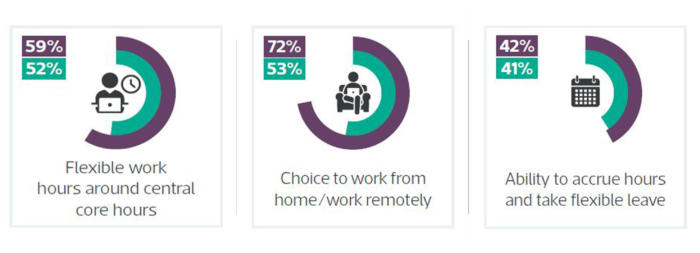Flexible Working: the new normal
In 2014, The Institute of Leadership undertook research to predict how the work of leaders and managers would change by 2020. When 2020 arrived, we decided to revisit some of our predictions from 2014 and explore how leadership and management might continue to evolve to respond to the changing business environment, which resulted in our brand new research, published today, ‘Future Trends in Leadership & Management – Flexible Working: the new normal’.
With 80% of people now working more flexibly than they did in 2014, the opportunity to work flexibly has become THE most sought-after benefit across all age groups, with 53% of women stating the importance, compared to 39% of men. In this report, we compare current practice with our predictions from 2014, whilst also asking what other sorts of flexibility are likely to become normal.


The 2020 research found:
- The most important benefit, to all age groups, is flexibility around core hours (47%).
- 36% of 18-30 year olds said that working flexibly to extend their holiday entitlement is the third most important benefit to them (after flexibility around core hours and employer paid-for training).
- Flexibility around core hours is more important to women (53%) than men (37%).
- Men are more likely to value physical benefits such as private medical insurance and company shares.
- Offering the benefits that specific age groups or genders want, may increase staff motivation, help to achieve a gender-balanced business and improve attraction and retention of the talent your organisation needs.
Need to know how to retain your best talent? Looking to discover how you can attract younger workers into your organisation? Want to achieve that elusive gender balance?

